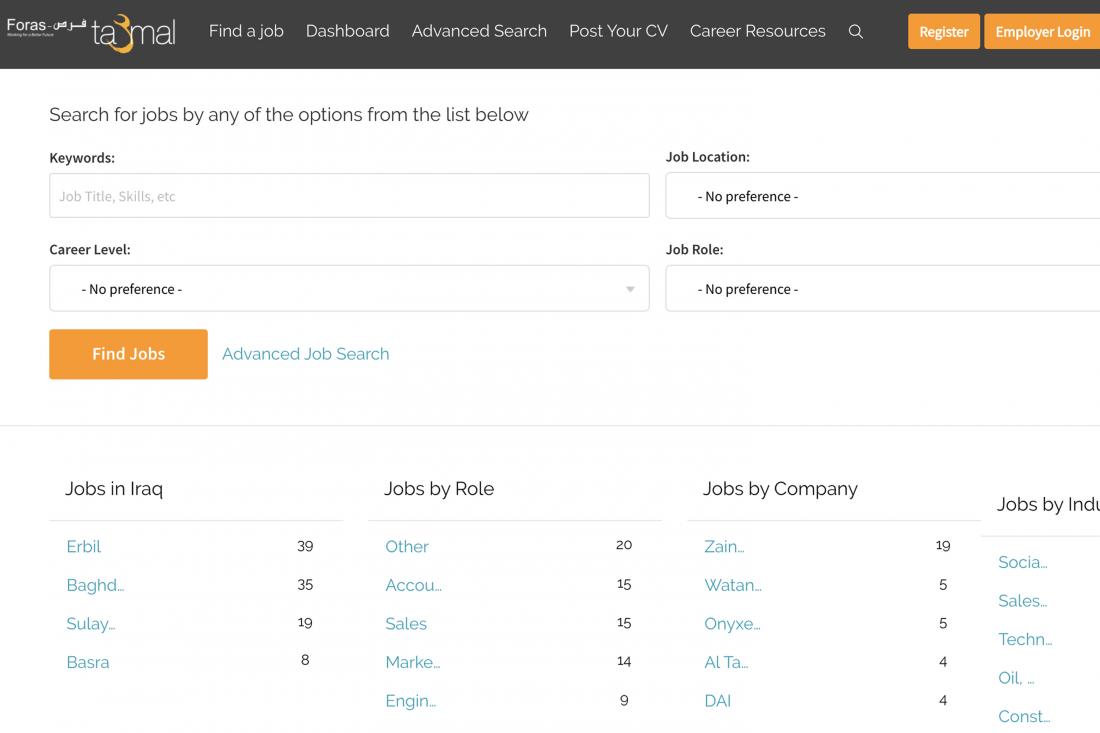Improving Job Matching Among Youth in Iraq
- Job seekers
- Youth
- Earnings and income
- Employment
- Digital and mobile
- Information
- Job counseling
One reason for high rates of youth unemployment may be a misalignment between youth aspirations and expectations and the opportunities available in the job market. As youth increasingly spend time online, can web-based employment tools help better match youth to jobs?
Policy issue
Youth career aspirations and expectations are not always aligned with their own skill set or the opportunities available in the job market, potentially contributing to high rates of youth unemployment and longer unemployment duration. Youth may not know what jobs might be a good fit for their skills or lack direction in their career path. As internet usage expands in developing countries, can web-based employment tools help better match youth to jobs?
Context of the evaluation
Youth unemployment is a significant challenge in the Middle East and North Africa: In 2014, an estimated 28 percent of youth (aged 15-24) were unemployed in the Middle East, and 31 percent were unemployed in North Africa.1 Meanwhile, Internet usage and online job search has increased in importance, even among low-income populations.
In partnership with Microsoft and Bayt (a large job site in the Middle East), Silatech—an organization that supports youth in their transition to work—has developed an online portal where youth can apply for jobs.The portal also offers online career guidance and eLearning resources. In Iraq, where this study takes place, Silatech’s portal has over 115,000 registered job seekers.

Details of the intervention
Researchers partnered with Silatech and Bayt to evaluate the impact of several interventions designed to improve job matching. The interventions were administered with youth to Silatech’s online job matching portal, where employers post job vacancies that applicants can apply to.
The first experiment was designed to determine whether youth have inaccurate expectations about their own job prospects and whether providing them with information can better guide their job search. The experiment randomly assigned new job seekers on the website to one of three different treatment groups:
1. Job market competition information (T1): Job seekers receive information about the competitiveness of the job postings they view, specifically, the number of other applicants who had already applied for the job
2. Job market competition + individual ranking information (T2): Job seekers receive the T1 information plus information about how the job search website’s internal algorithm would rank them relative to the existing applicants
3. Comparison group: Job seekers could only access the normal website, as per the status quo.
Researchers will evaluate whether providing objective information helps jobseekers target better-suited jobs and to identify which type of information is effective at changing application behavior. This experiment is also being supplemented with beliefs surveys measuring what youth believe about the job market competition and their own qualifications prior to the intervention, and how their beliefs respond to the information provided.
In a second phase of the intervention, the researchers will conduct an analysis of existing data from the job matching portal to better understand the causes of job seekers’ search difficulties. Based on this analysis, researchers will introduce other targeted modifications to the job database, such as providing additional recommendations to youth about jobs for which they would be a good fit. Youth will be randomly assigned to receive these targeted modifications.
To evaluate the effects of the intervention, researchers are collecting data from the website on job search behavior and effort (such as number and types of applications submitted), and conducting surveys of employers and job seekers to gather data on job market outcomes (such as interviews, job offers, wages, and tenure).
Results and policy lessons
Project ongoing, results forthcoming.
International Labour Organization (ILO) (2015). Global Employment Trends for Youth 2015. Policy report.

